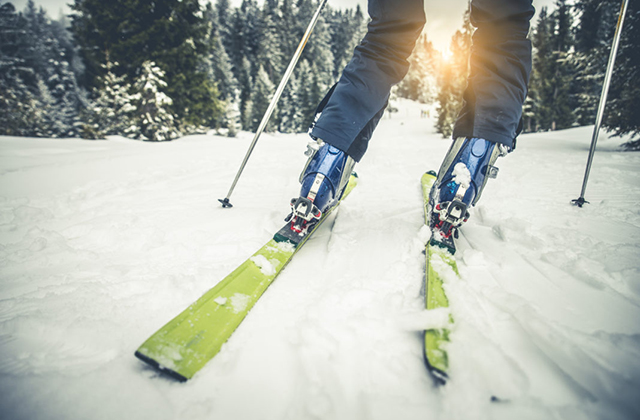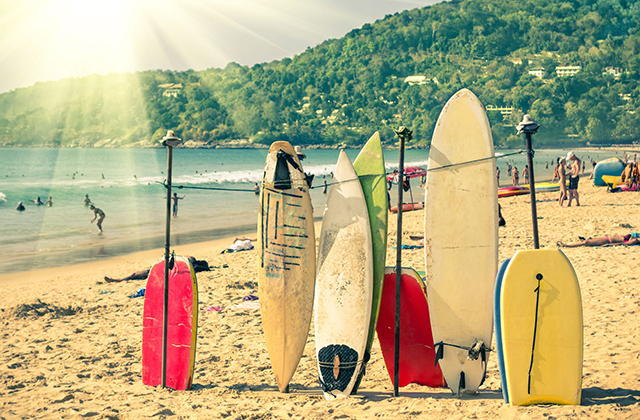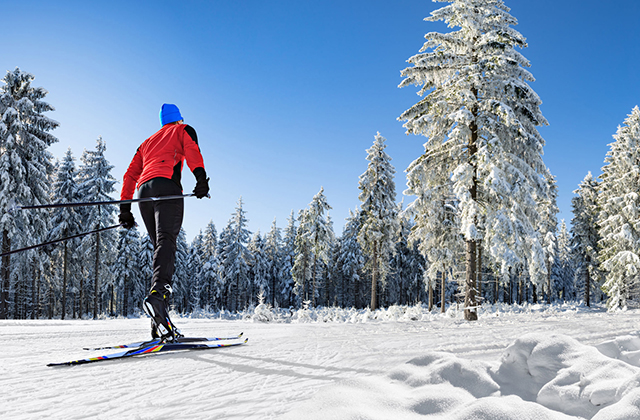Get access to the most terrain on the planet with a trip from Last Frontier heli skiing Canada where the powder is endless. While you may have skied for years, decades even, on countless different pairs of skis, have you ever sat down and thought about what actually makes up those sticks you strap to your feet and send down a mountain?
Every material and method used in the construction of a ski influences its personality on the snow: how stiff or flexible it is, how heavy it is, how well it can hold an edge, the list goes on. “One of the proprietary elements of a ski is its feel,” said Matt Sterbenz, founder of 4FRNT Skis. “That feel ultimately derives from the materials used in the construction of that ski.” So, before you go buying your next pair of skis, study up on what goes into that $800 pair of pleasure planks.
Cores
One of the last remaining pieces of modern sports equipment that still
relies on good ol’ fashioned wood, most ski manufacturers today use a
combination of different woods to achieve a perfect balance of weight,
strength, and flex. The wooden core is at the, well, core, of defining
how a ski feels says Sterbenz. “When your ski hits the snow, it’s the
materials used in the core that reverberate that unique feeling up
through your boots and onto you.”
Ash, Maple, Poplar, and Aspen are among the most popular woods used in ski cores. Maple and Ash are two of the stiffest and most durable woods available, making them a go-to for most hard-charging, big mountain skis Opens a New Window. . Poplar and Aspen are much lighter woods, and can be found as a blend in more playful park and all mountain skis Opens a New Window . Touring skis take advantage of the lightest of woods, like Paulownia or Bamboo.
Composite Layers
Fiberglass
While the wood used in the core can have a big effect on a ski’s
performance, the materials used for reinforcement are what truly give a
ski its personality on the snow. Every ski utilizes two basic composite
layers: a fabric, that actually provides a ski with 50-80 percent of
it’s overall stiffness, and an epoxy that holds everything together.
Perhaps the most popular composite used in ski construction is fiberglass. While it begins as a seemingly ordinary white fabric, when applied to the core with a thick layer of epoxy, fiberglass becomes a strong yet extremely responsive material, giving your skis that perfect level of butter-ability.
Carbon Fiber
While fiberglass has dominated the market as the go-to material for ski
construction for years, in the last decade, the introduction of carbon
fiber into the sports equipment industry has led to many ski
manufacturers putting it inside their skis.
Much more expensive than fiberglass, carbon fiber’s extra cost is attributed to its extremely light weight for how stiff it is. This weight reduction from fiberglass makes carbon a popular material in most backcountry and touring skis, where every ounce counts.
Titanal
An aerospace-grade aluminum alloy only made by one company in the world,
Titanal creates the “dampest” ride for a ski, smoothing out a lot of
the vibration you might feel in a similar ski. Because it is a metal, it
does add a lot of weight to a ski, however its torsional rigidity makes
it desirable for those who are looking for a super stiff ski.
Base Material
The base of your skis are built of a material called
ultra-high-molecular-weight polyethylene (UHMW-PE) and are generally
only a millimeter or two thick. Ski bases utilize a “sintered” UHMW that
has tiny pores that accept wax, allowing an improved glide across the
snow.
Topsheet
Apart from protecting the inside of your ski from water damage, the topsheet is a canvas for manufacturers to decorate their skis.
Printing on a topsheet can be done in three different ways: screen printing, sublimation, and direct digital printing. Screen printing involves layers of ink sprayed across a stencil and pressed into the topsheet. Sublimation is like a temporary tattoo, in which the graphic is printed onto paper and then heat pressed onto the topsheet. With direct digital printing, the topsheet material is loaded into a special printer, which achieves a crisp, perfect design printed directly onto the topsheet.
Sidewall
There are three basic types of ski construction: sandwich (sidewall), cap, and a hybrid of the two.
For years, only high-end skis were built with sidewall construction, which essentially sandwiches a “wall” of ABS plastic on either side of the core between the topsheet and edges. Instead, they opted for the cheaper and lighter cap construction, which wrapped the top sheet all the way around to the edges.
In recent years, a hybrid semi-cap construction has been developed, which features a sidewall underfoot that tapers to a cap at the tip and tail. With this construction, the sidewall through the middle of the ski provides an excellent edge, while the tapered cap saves weight (and money, for manufacturers) along the tip and tail.



